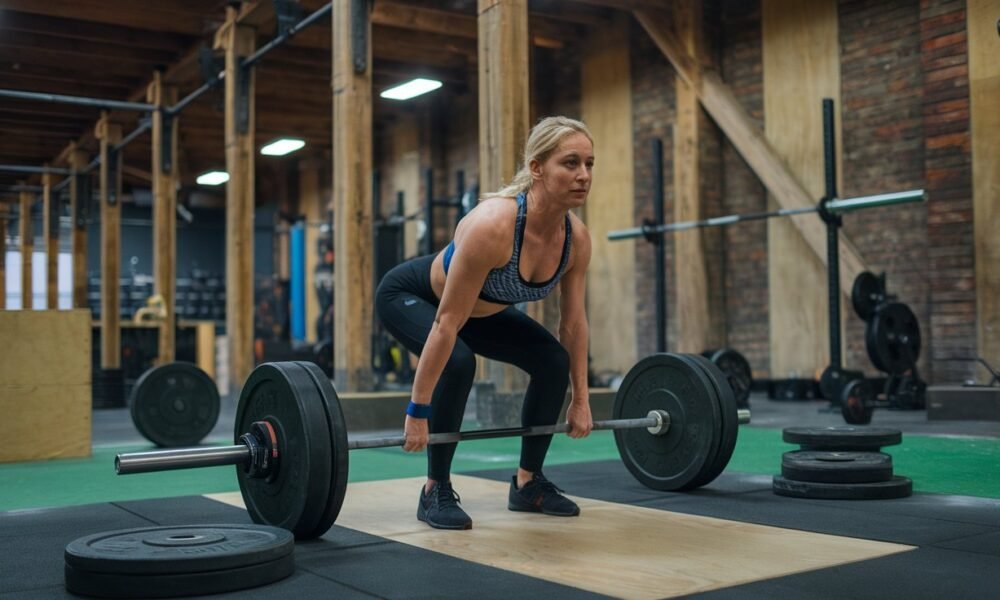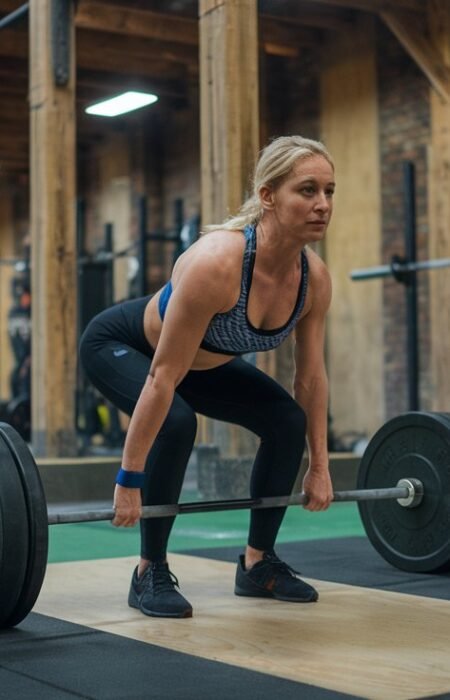5 Strength Training Myths Every Woman Over 35 Should Ignore
Why Lifting Weights Is Your Secret Weapon for Agility, Energy, and Longevity
For decades, women over 35 were told to “take it easy”—stick to yoga, walking, or light dumbbells. Meanwhile, strength training was labeled “too risky,” “too intense,” or worse: “unfeminine.” These outdated myths aren’t just wrong—they’re dangerous. They rob women of their vitality, bone density, and metabolic resilience during a critical life phase.
As estrogen shifts and metabolism evolves, strength training becomes more essential, not less. It’s time to retire the fiction and embrace the iron. Here are 5 myths holding you back—and the truths that will set you free.

Myth 1: “Lifting Heavy = Bulky Muscles”
The Lie:
“Women can’t build lean muscle without looking masculine.”
The Truth:
- Testosterone levels in women are 10-20x lower than men’s. Building “bulk” requires genetic predisposition, extreme calorie surpluses, and years of targeted training. What heavy lifting actually delivers:
- Metabolic Firepower: Muscle burns 5x more calories at rest than fat.
- Bone Density Boost: Resistance training triggers osteoblast activity, reducing osteoporosis risk by 45% (Journal of Bone and Mineral Research).
- Functional Strength: Carrying groceries, lifting grandchildren, moving furniture—effortlessly.
Your Move:
Start with compound lifts (squats, deadlifts, rows) at weights challenging for 8-10 reps. Progressive overload—not powder-pink dumbbells—sculpts a strong, defined physique.
Myth 2: “Cardio Is Superior for Fat Loss”
The Lie:
“Hours on the treadmill beats lifting for weight management.”
The Truth:
- Cardio burns calories during the workout. Strength training delivers a 24-48 hour “afterburn” (Excess Post-Exercise Oxygen Consumption/EPOC), elevating metabolism long after you leave the gym.
- A 2023 study found women over 35 who strength trained 3x/week lost 3x more visceral fat than cardio-only peers (Medicine & Science in Sports & Exercise).
- Muscle is metabolically active tissue—the more you have, the higher your resting metabolic rate.
Your Move:
Pair 2-3 strength sessions weekly with 1-2 metabolic conditioning workouts (e.g., incline treadmill walks, kettlebell swings). Stop chasing calories; build a furnace.
Myth 3: “High Reps/Light Weights ‘Tone’ Better”
The Lie:
*”Lighter weights with 20+ reps create ‘long, lean muscles.’”*
The Truth:
- Muscles don’t “tone”—they grow, shrink, or stay the same. Light weights build endurance but fail to stimulate muscle growth or metabolic change.
- Progressive tension (lifting heavier over time) is the only scientifically proven way to:
- Increase muscle protein synthesis.
- Improve insulin sensitivity (critical for perimenopause).
- Counteract age-related muscle loss (sarcopenia).
Your Move:
Lift weights where the last 2 reps feel challenging. Aim for 6-12 reps/set. If you hit 12 easily, increase weight.
Myth 4: “Strength Training Wrecks Joints”
The Lie:
“Lifting causes arthritis or injury after 35.”
The Truth:
- Proper strength training fortifies joints by:
- Strengthening tendons/ligaments.
- Increasing synovial fluid (nature’s joint lubricant).
- Improving proprioception (joint positioning sense).
- A 2022 meta-analysis confirmed: resistance training reduced knee osteoarthritis pain by 35% and improved mobility (British Journal of Sports Medicine).
Your Move:
Master form first. Work with a trainer or use video analysis. Prioritize controlled eccentrics (lowering phases) to build connective tissue resilience.
Myth 5: “It’s Too Late to Start”
The Lie:
“Muscle building stops after 35.”
The Truth:
- Women over 35 often gain strength FASTER than beginners in their 20s due to superior neurological efficiency (your brain “recruits” muscle fibers faster).
- Research shows untrained women over 50 can gain 2-3 lbs of muscle in 8 weeks with consistent lifting (University of Birmingham).
- Strength training also:
- Lowers cortisol (combating menopause-related stress).
- Improves sleep quality by 40%.
- Reduces hot flash severity (Menopause Journal).
Your Move:
Start with 2 full-body sessions/week. Focus on mastery—not max lifts. Celebrate small wins (e.g., your first bodyweight squat or push-up).
The Unspoken Perks (Beyond Physical)
| Benefit | Why It Matters After 35 |
|---|---|
| Hormonal Harmony | Balances insulin/cortisol—critical for midlife metabolic health. |
| Cognitive Protection | Lowers Alzheimer’s risk by 50% (Frontiers in Neuroendocrinology). |
| Emotional Resilience | Boosts dopamine/serotonin; reduces anxiety by 30%. |
| Injury Immunity | Prevents falls (leading cause of disability in women over 65). |
Your No-Nonsense Starter Plan
- Frequency: 3x/week (e.g., Mon/Wed/Fri).
- Focus: Compound movements > isolation exercises.
- Examples: Goblet squats, dumbbell bench presses, bent-over rows, hip thrusts.
- Progression: Add 2.5-5 lbs weekly (or reps/sets).
- Recovery: Prioritize protein (30g/meal) and sleep (7-9 hrs).
“Strength training after 35 isn’t about ‘getting jacked’—it’s about staying independent. It’s the difference between hiking Machu Picchu at 60 or struggling to rise from your sofa.”
— Dr. Stacy Sims, Women’s Health Research Pioneer
The Bottom Line
Your body isn’t declining—it’s evolving. And strength training is its language of resilience. Ignore the noise. Lift like your quality of life depends on it—because it does. Your strongest, most vibrant chapters are still unwritten.
Action Step Today:
Choose one myth you believed. Then, defy it.
- Do 5 push-ups (knees or wall).
- Lift a grocery bag mindfully.
- Book a trainer session.
Prove your body wrong.








